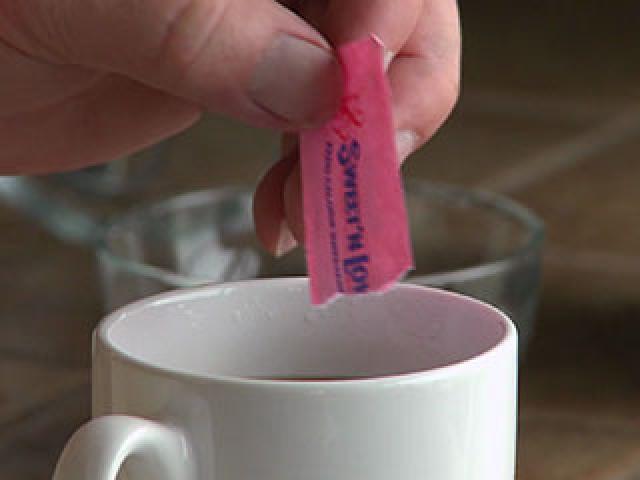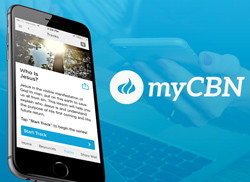How Sweet It Is: Sorting Out Sweeteners

If you crave sweets, join the crowd. According to a government survey, the average person in the United States eats the equivalent of 20 teaspoons of sugar per day, and some consume much more. Many Americans also consume artificially sweetened foods and beverages.
How can you decide which sweeteners to consume? Here are some facts to help you make informed decisions about sweet stuff.
Sweetness times two
There are two kinds of sweeteners: nutritive and nonnutritive. Let's talk about them one at a time. Nutritive sweeteners contain calories but usually have no appreciable amounts of any other nutrients. They are used to sweeten all kinds of foods and beverages. According to nationwide surveys, the average intake of energy from these sweeteners ranges from 15-21 percent of daily calories. Soft drinks account for almost one-third of the "added sugar" intake for Americans.
NUTRITIVE SWEETENERS
Table sugar, also called "sucrose," comes from sugar cane and sugar beets. Table sugar is made of two single sugars called glucose and fructose. A teaspoon contains 16 calories. Powdered sugar is table sugar mixed with cornstarch.
Brown sugar is made by adding molasses to table sugar to give it a more robust flavor.
Fructose, also called "fruit sugar," is found in fruits, vegetables, and honey. It is sweeter than table sugar. A crystalline form of fructose is widely used in commercial baked goods and beverages.
High fructose corn syrup (HFCS) is created by chemically converting some of the glucose in corn starch to fructose, making the final product sweeter than regular sugar. HFCS is used to sweeten many foods and beverages.
Lactose, also called "milk sugar," is found in dairy products. People with lactose intolerance lack the enzyme to digest lactose.
Honey is made of glucose, fructose, and water with a few trace minerals and vitamins. It is also a source of antioxidants. Honey contains 21 calories per teaspoon. Infants less than one year old should never be fed honey because it can contain spores that can cause infant botulism.
Real maple syrup comes from the sap of the maple tree. Most pancake syrups aren't maple syrup at all and consist of corn syrup, high fructose corn syrup, and flavorings.
Molasses and blackstrap molasses are by-products of table sugar production. Blackstrap molasses contains small amounts of iron and calcium.
Polyols have names that end in "-ol," such as erythritol, mannitol, sorbitol, and xylitol. They are often called alcohol sugars, but they are neither alcohol nor sugar. Polyols are only partially absorbed by the body and have fewer calories than sugar. Excessive intake can cause gas, bloating, and diarrhea in some people. Polyols are the only nutritive sweeteners that do not cause tooth decay. An example of a brand name is Sun Crystals.
NONNUTRITIVE SWEETENERS
Nonnutritive sweeteners contain few or no calories, so they are also called low-calorie sweeteners and are often found in "diet" foods. According to the Calorie Control Council National Consumer Survey, 194 million adult Americans consumed low-calorie, sugar-free foods and beverages in 2007, up from only 78 million in 1986.
Before gaining approval by the Food and Drug Administration (FDA), all nonnutritive sweeteners must go through extensive testing for safety in studies using animals and humans. Currently there are five FDA-approved nonnutritive sweeteners:
Saccharin is perhaps the oldest artificial sweetener and is 300 times sweeter than sugar. Some people notice a bitter aftertaste. Early experiments showed it caused bladder cancer in rats, so warnings were required on labels of saccharin-containing foods and drinks for many years. Numerous follow-up studies using people instead of rats suggest saccharin is safe for humans when consumed in recommended amounts. Brand names for saccharin include Sweet and Low, Sweet Twin, and Sugar Twin.
Aspartame is a very low-calorie sweetener made of two amino acids, phenylalanine and aspartic acid. During digestion, aspartame is broken down into the two amino acids plus a small amount of methanol. All three of these substances are found naturally in foods and are reported to be metabolized normally from the sweetener.
Various claims of health problems like headaches, vision changes, and other neurotoxic effects have been attributed to aspartame. However, the FDA asserts that more than 100 studies confirm that aspartame is safe for the general population and it was approved in 1981. However, people with phenylketonuria, a rare metabolic disorder detected at birth, should not use aspartame at all.
Aspartame is 180 times sweeter than sugar. It is rarely used in baking or cooking because it breaks down when heated. Brand names for aspartame include NutraSweet and Equal.
Acesulfame potassium is listed on nutrition labels as acesulfame-K because "K" is the symbol for potassium. The body doesn't metabolize acesulfame-K, so it provides no calories, even though it is 200 times sweeter than sugar. Studies show that most potassium in the sweetener is excreted in the urine, so it does not affect overall dietary potassium intake. Acesultame-K was approved by the FDA in 1988. Brand names include Sunnett and Sweet One.
Sucralose tastes like sugar because it is made from sugar. Itis created by replacing some of the oxygen-hydrogen groups on the sugar molecule with chlorine atoms. About 600 times sweeter than sugar, sucralose is very stable and can be used in cooking. It received FDA approval in 1998. Sucralose is calorie-free and a brand name is Splenda.
Neotame is the newest low-calorie sweetener, approved by the FDA in 2002 as a general purpose sweetener. Over 100 studies were done testing the safety of Neotame, which is 7,000 times sweeter than sugar. It has no aftertaste and is used to enhance other flavors in beverages or foods.
So that's the skinny on sweeteners! Here is how the experts sum it up:
"It is the position of The American Dietetic Association that consumers can safely enjoy a range of nutritive and nonnutritive sweeteners when consumed in a diet that is guided by current federal nutrition recommendations, such as the Dietary Guidelines for Americans and the Dietary References Intakes, as well as individual health goals." (excerpt from ADA Position Paper on Use of Nutritive and Nonnutritive Sweeteners, 2004.)
This is a fancy way of saying that eating sweets can be part of a balanced diet, whether foods are sweetened with sugar or any of the FDA-approved nonnutritive sweeteners.
The Bible uses the phrase "flowing with milk and honey" to describe the abundance of the Promised Land. Both milk and honey contain sugar! The truth is, God has given us sweet flavors as blessings to be enjoyed. But at the same time, Scripture offers this admonition: “It is not good to eat too much honey…” (Proverbs 25:27*a).
The bottom line? Whether you use sugar or low-calorie sweeteners, enjoy them in moderation as part of a healthy, balanced diet.
SOURCES
"Fact Sheet: Low-Calorie Sweeteners." International Food Information Countil Foundation. www.ific.org. Accessed 6/25/08.
"Facts About Sucralose." American Dietetic Association fact sheet, 2006.
Henkel, John. "Sugar Substitutes: Americans Opt for Sweetness and Lite." FDA Consumer, revised February 2006. www.cfsan.fda.gov/~dms/fdsugar.html. Accessed 6/25/08.
Herman, Janice R., PhD, RD. "Dietary Sugar and Alternative Sweeteners." Oklahoma Cooperative Extension Service, Division of Agricultural Sciences and natural resources, Oklahoma State University, 2005.
"Low-Calorie Sweeteners and Health." International Food Information Council Foundation, October 2000. www.ific.org/publications/reviews/upload/Low-Calorie-Sweeteners-and-Heal.... Accessed 6/25/08.
"Low Calorie Sweeteners: Their Role in Healthful Eating." International Food Information Council, 2000.
Meerschaert, Carol M., RD. "Sweet Tooths and Sugar Substitutes – A Scientific Analysis." Today's Dietitian, Vol. 8, No. 5, May 2006.
"Polyols: Sweet Benefits." American Dietetic Association fact sheet, 2008.
"Position of the American Dietetic Association: Use of Nutritive and Nonnutritive Sweeteners." Journal of the American Dietetic Association, 2004;104:255-275.
"Straight Answers About Aspartame." American Dietetic Association fact sheet, 2006.






